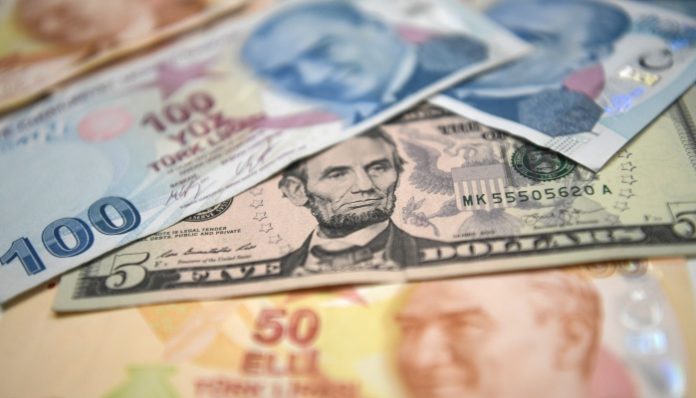we start looking for profit opportunities elsewhere, the Turkish lira will come up soon. What’s happening with the TRY and is it fit for trading?
During September and the beginning of October, the lira was rather stable versus the USD. USD/TRY kept returning down to the support at 5.63, while the upside was limited by the 100-day MA. This week, however, the lira has experienced a selloff, the pair jumped above the mentioned moving average and got to the highest levels since the end of August in the 5.88 area.
Fight for the lira
For many months, Turkish state banks have been holding the advance of USD/TRY by selling dollars. According to Bloomberg, in March they sold between $10 billion and $15 billion ahead of the municipal elections.
On Monday, the lira took a blow after Turkey began a military offensive into northeastern Syria. The banks intervened when USD/TRY was around 5.84/5.85 and sold about $1-3.5 billion during the past few days. However, this wasn’t enough to negate political risks: American President Donald Trump said that the United States will “obliterate” Turkey’s economy if it did anything he considered “off-limits.” Although Trump later said that Turkey was a “big trade partner” of the US, USD/TRY stayed above 5.80.

It’s evident that the resources of any central bank aren’t endless and the Turkish central bank is no exception: it obviously won’t be able to support the lira by selling reserves during an extensive period. If tensions between the United States and Turkey keep escalating, the regulator might have to consider rate hikes to stop the fall of the TRY. This, however, is against what President Recep Tayyip Erdogan has in mind.
Economy and monetary policy
Turkish economy is going through hard times: it experienced the first recession in a decade. To restore growth, the Turkish central bank has slashed borrowing costs by 7.5 percentage points since July. The looser monetary policy is endorsed and promoted by President Erdogan.
The next meeting of the central bank will take place on Oct. 24. Although Governor Murat Uysal sounded cautious about further action, a rate cut this month is still likely given the decline in inflation. Notice that Turkey’s benchmark rate is currently at 16.5%. If we adjust this rate for inflation, it will still be higher than in most emerging markets. This, in turn, means that, despite the rate cuts, the TRY may still be attractive for those who hunt for yields and are willing to bear the immense country risk.
Notice that the International Monetary Fund has recently revised up its growth forecasts for Turkey. According to the IMF, fresh stimulus including an expansionary fiscal policy can make the GDP growth rebound by 0.25% instead of a previously projected 2.5% contraction by the end of 2019.
Despite this ray of sunshine, Turkey’s position remains very fragile. A continuation of the invasion to northern Syria can lead to the US sanctions – something the Turkish economy will have a really hard time dealing with. S&P Global Ratings has warned that the military deployment raised risks for the lira and Turkey’s balance of payments: all the progress made during the recent year may evaporate. If you monitor the TRY, keep your eyes open for the news: Erdogan will visit Washington on November 13 and the market may put some hopes in the TRY ahead of the meeting, though the future will, of course, depend on its outcome.
Conclusion
As you can see, the situation for the TRY looks nasty and difficult. Rate cuts and military action will continue keeping the currency under negative pressure. On the bright side, the relations between the United States and Turkey look better than they did a year ago (merely because back then they were outright terrible) and interest rates in the country are still high. As long as things don’t escalate from this point, the fall of the lira shouldn’t be extremely steep. As a result, the advance of USD/TRY may be limited by 5.90/95. The next key resistance lies at 6.00. Support, in turn, is located at 5.80 and 5.70.
The bigger picture will change in favor of the TRY only if Turkey conducts fundamental economic reforms or reaches a trade deal with the United States. With those things unlikely soon, USD/TRY will trend to the upside.
Source: FX Empire



